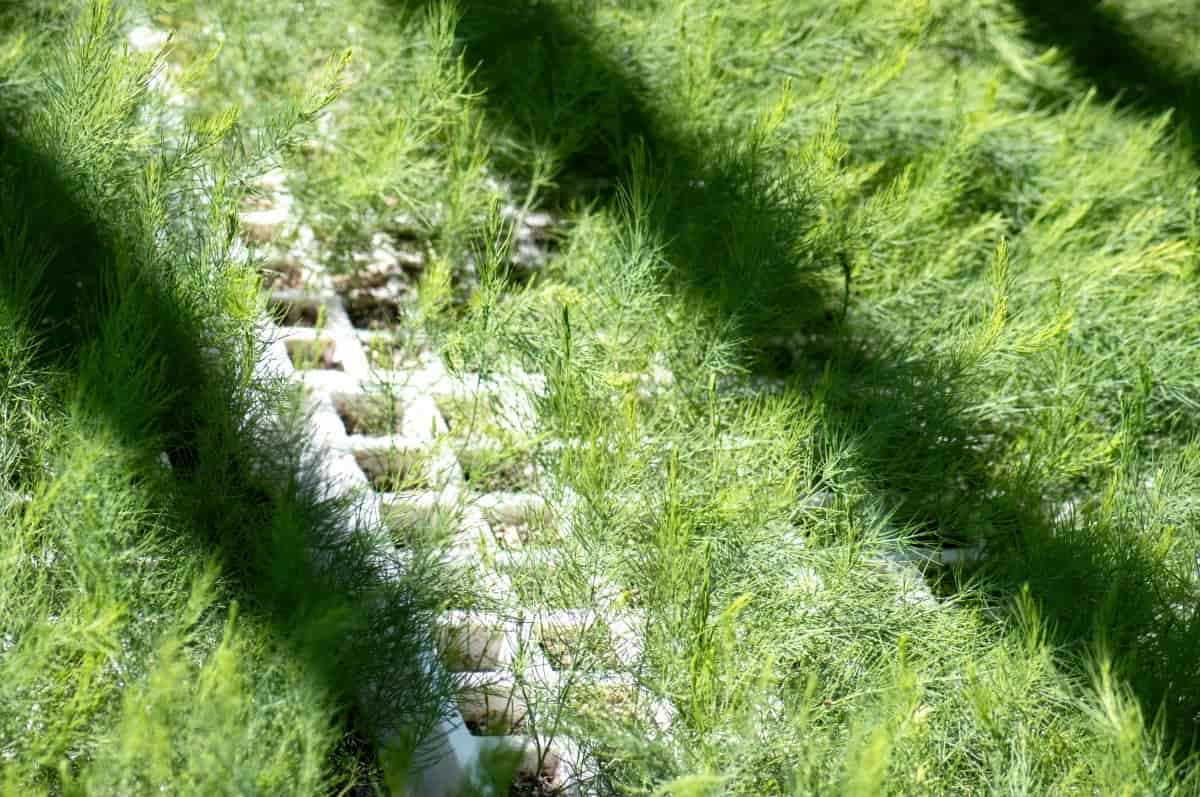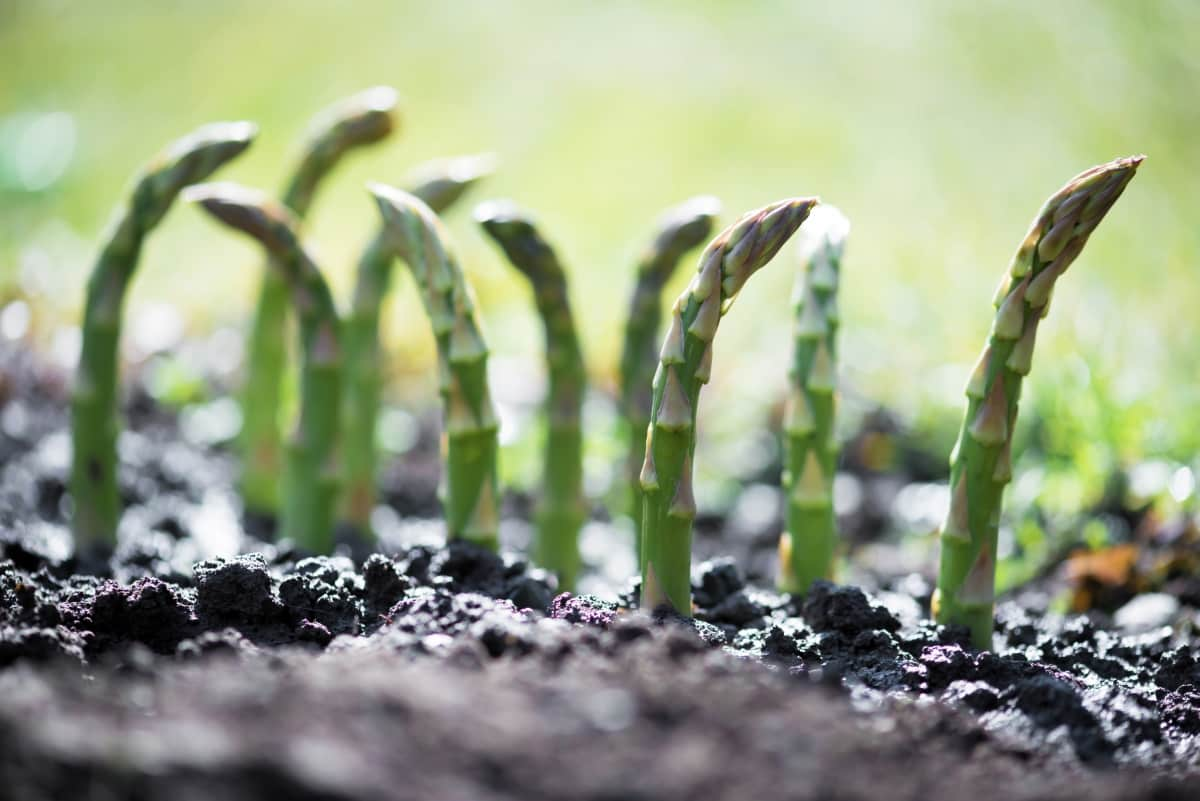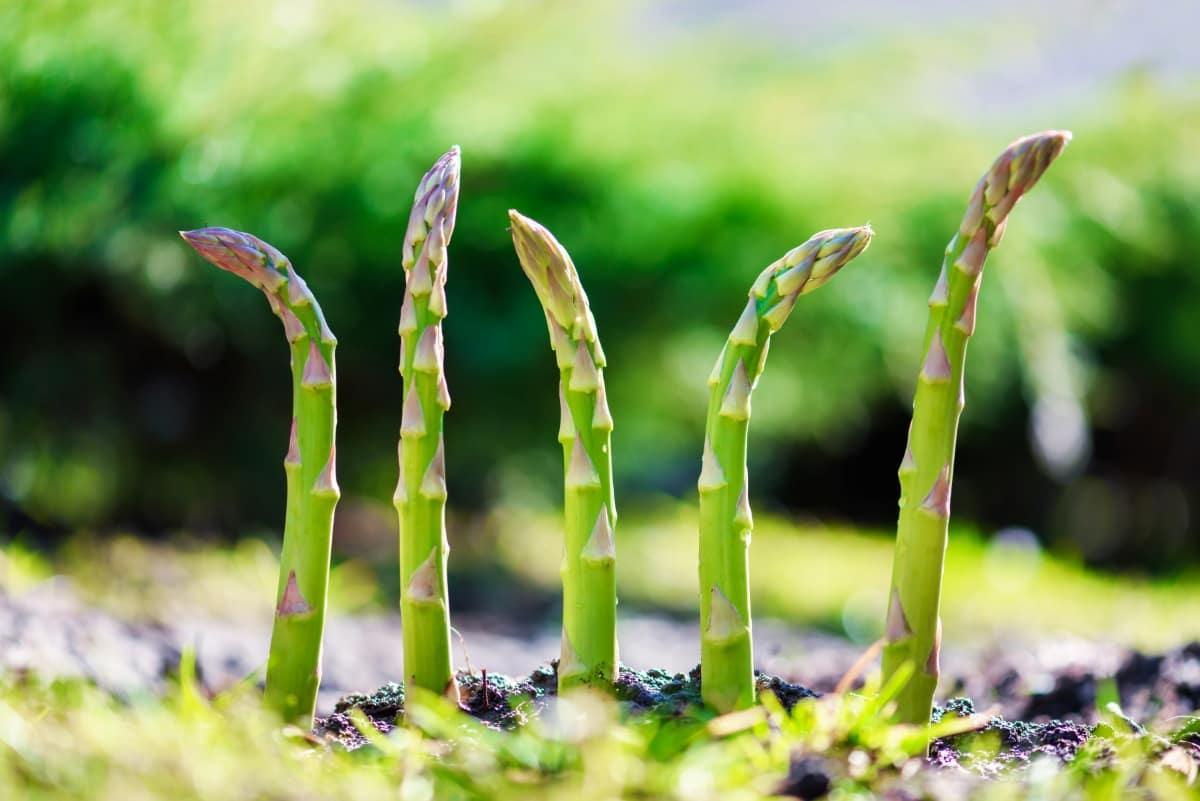Asparagus, with its unique flavor and impressive nutritional profile, is a rewarding addition to any garden. This guide dives into the essentials of growing asparagus, covering everything from planting asparagus crowns to maintaining a flourishing crop. We’ll explore the crucial steps, such as selecting the right site, preparing the soil, choosing varieties, and managing pests and weeds.

Whether you’re interested in how to grow asparagus in a container or your backyard garden, this guide will provide practical and easy-to-follow advice. With patience and proper care, asparagus can be a perennial source of delight in your garden.
Planting Asparagus Crowns
Selecting the Right Site for Planting Asparagus Crowns
When planning how to grow asparagus at home, selecting the right site is crucial. Choose a sunny location with well-drained soil, as asparagus thrives in sunlight and does not tolerate waterlogged conditions. An area with at least 6-8 hours of direct sunlight is ideal. Ensure the site is away from aggressive plants since asparagus needs space to grow. If considering growing asparagus in raised beds, ensure the site allows for bed construction.
Preparing the Soil for Planting Asparagus Crowns
Proper soil preparation is critical for growing asparagus successfully. Start by preparing the soil to a depth of about 12-15 inches, as this is essential for properly planting asparagus crowns at the correct depth. Enhance soil fertility by incorporating aged manure or compost. To prevent waterlogging, ensure efficient drainage and maintain a pH level that is slightly acidic to neutral. If engaging in container gardening, choose a spacious container and utilize a well-draining potting mix to replicate these optimal conditions.
Choosing the Best Asparagus Varieties for Planting
Selecting the right asparagus variety can greatly influence your gardening success. Look for disease-resistant varieties that suit your climate. Popular choices include ‘Jersey Knight’ and ‘Mary Washington.’ Consider the maturity rate and flavor of each variety. Your local nursery can offer advice on the best varieties for your area, especially for specific conditions like container gardening.
Purchasing and Inspecting Asparagus Crowns
Purchase asparagus crowns from a reputable source. Ensure they are healthy and free from signs of rot or damage. Healthy crowns have firm, intact roots and are free from mold. It’s best to buy crowns in the early spring, the ideal time for planting. Avoid crowns that appear overly dry or shriveled.
In case you missed it: How to Grow Asparagus Hydroponically: A Step-By-Step Guide

Planting Asparagus Crowns in the Ground
When planting asparagus crowns, dig trenches about 6-8 inches deep and 12-18 inches wide. Space the trenches about 3-4 feet apart to allow room for growth. This spacing is important for how far apart to plant asparagus crowns. Place the crowns in the trenches about 12-18 inches apart, spreading the roots evenly. Cover them with 2-3 inches of soil. Gradually fill in the trench with soil as the plants grow until it is level with the ground surface.
Watering and Mulching Newly Planted Asparagus Crowns
Water the newly planted asparagus crowns gently but thoroughly. Maintain soil moisture consistently without over-saturating it. Mulching is beneficial for maintaining moisture and controlling weeds. Use organic mulch like straw or compost. Mulch also helps regulate soil temperature, which is crucial for the development of the plants.
Fertilizing and Maintaining Asparagus Beds
Fertilize asparagus beds in the early spring and again after the harvest season. Use a balanced fertilizer or well-rotted manure. Regular weeding is crucial as asparagus competes poorly with weeds. Cut back the ferny foliage in the fall after it turns yellow. To grow asparagus from cuttings, cut healthy, mature spears at ground level and plant them in moist soil, following similar care as for crowns.
In case you missed it: How and When to Fertilize Asparagus Plants: Requirements and Recommendation

Managing Weeds and Pests in Asparagus Beds
Effective management of weeds and pests is essential for healthy asparagus growth. Regular weeding is crucial as asparagus competes poorly with weeds, which can also harbor pests. Mulching helps suppress weed growth and maintains soil moisture. Be vigilant about pests like asparagus beetles, which can be controlled by handpicking or using appropriate insecticides. Employ organic methods like neem oil or insecticidal soaps for a more natural approach.
It’s also important to monitor for diseases such as fusarium wilt or rust. Proper air circulation, avoiding overhead watering, and keeping the area clean can help prevent these issues. Regularly inspect your asparagus plants for signs of stress or disease and take immediate action if any problems are detected.
Harvesting and Storing Asparagus Spears
Harvesting asparagus at the right time ensures the best flavor and texture. Begin harvesting when spears are about 6-8 inches tall, and the tips are still tight. Use a sharp knife or snap the spears off at the base. Be gentle to avoid damaging the crown. The harvesting season typically lasts for 6-8 weeks.
After harvesting, wash the spears and pat them dry. For short-term storage, wrap the spear ends in a damp paper towel and place them in a plastic bag in the refrigerator. For longer storage, blanch the spears and then freeze them. Proper harvesting and storage techniques will maximize the freshness and flavor of your asparagus.
Renovating and Dividing Mature Asparagus Beds
Over time, asparagus beds may become overcrowded, leading to diminished yields. Renovating and dividing mature beds can rejuvenate them. This process is typically done in early spring or late fall. Carefully dig up the crowns and divide them, ensuring each division has at least one or two buds.
In case you missed it: 12 Common Problems With Asparagus Plants: Treatment and Solutions

Immediately replant the divisions at their original depth, and enhance the soil with compost or well-aged manure to restore essential nutrients. Space the divisions properly to give them room to grow. Water the newly planted divisions well. This renovation process helps in maintaining the vigor and productivity of your asparagus bed, ensuring a healthy crop for the following seasons.
Conclusion
Growing asparagus successfully requires attention to detail and patience, but the reward of harvesting your fresh spears is incomparable. Remember, asparagus is a long-term investment in your garden, often producing for 15 years or more. Regular maintenance and occasional renovation of the beds will keep your asparagus crop thriving. Embrace the journey of growing this versatile and delicious vegetable, and enjoy the fruits of your labor for many seasons to come.
- Feed Your Flock for Less: Top 10 Tips to Save on Chicken Feed
- Ultimate Guide to Ossabaw Island Hog: Breeding, Raising, Diet, and Care
- Hatching Answers: The Top 10 Reasons Your Chickens Aren’t Laying Eggs
- Eggs and Economics: Breaking Down the Cost of Raising Backyard Chickens
- Defend Your Greens: Proven Methods to Keep Iguanas Out of Your Garden
- Ultimate Guide to Cinnamon Queen Chicken: A Comprehensive Guide for Beginners
- Ultimate Guide to California Tan Chicken: Breeding, Raising, Diet, Egg-Production and Care
- Ultimate Guide to Marsh Daisy Chicken: Breeding, Raising, Diet, and Care
- 10 Types of Chicken Farming Businesses You Can Start for Profits